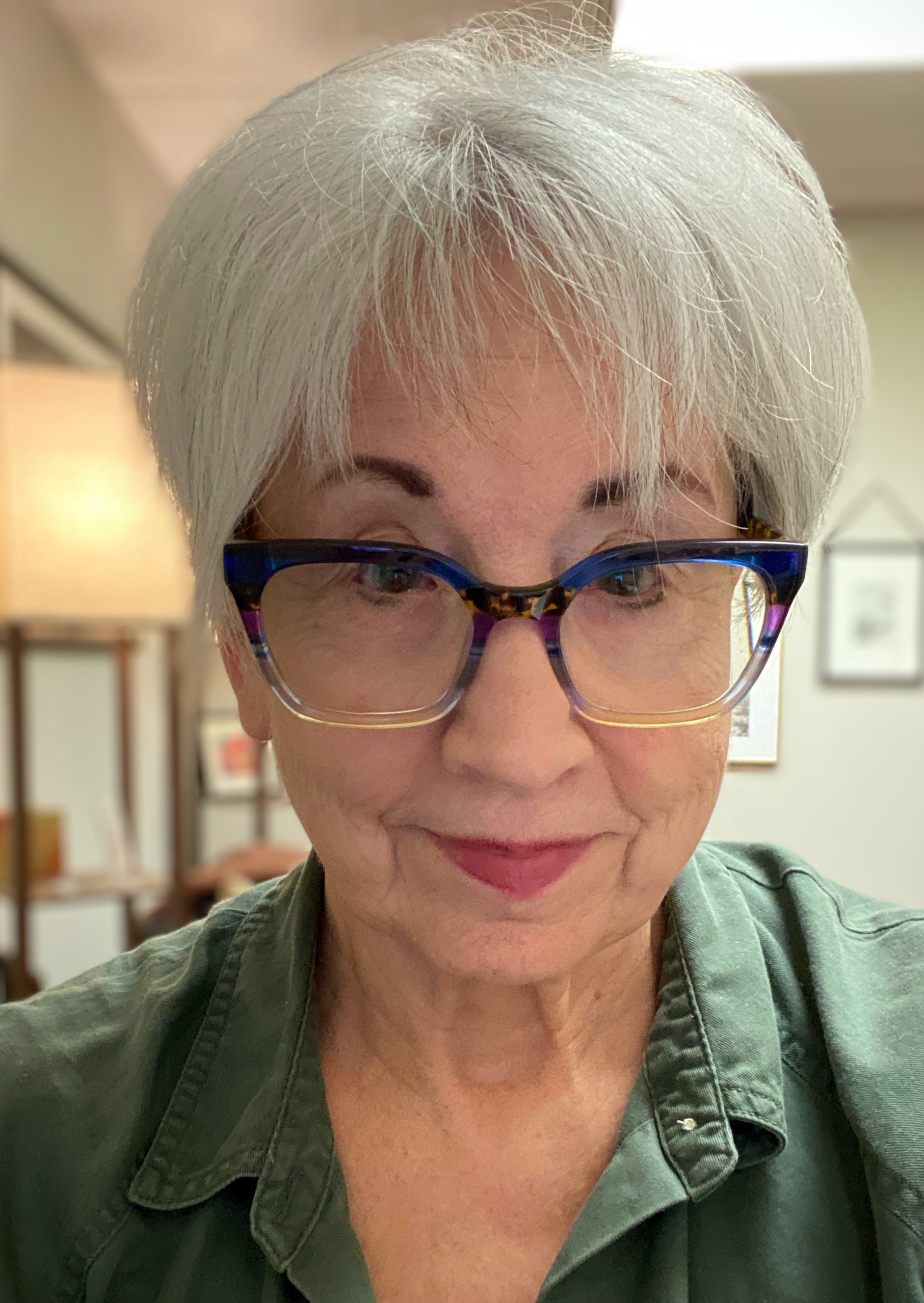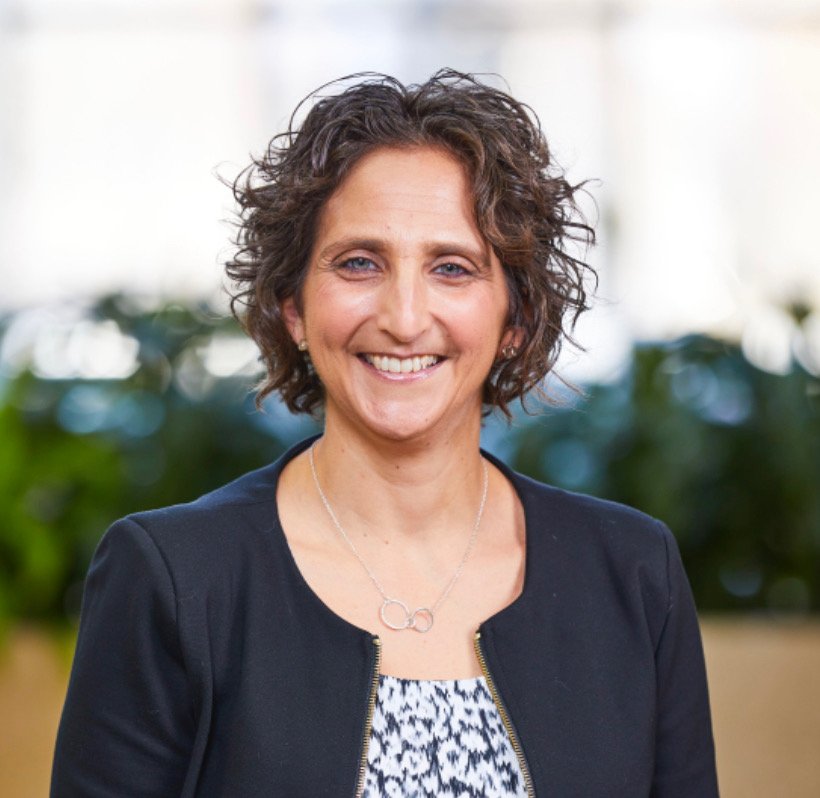High Holy Day Torah Chanters
Bet Shalom has a dedicated group of Torah chanters who beautify our High Holy Day services. Here some of them tell us about their experiences.
How and when did you start chanting Torah? Tell us your story.
Joyce Juster: I started learning to chant Torah when I came to Bet Shalom to have a bat mitzvah about 31 years ago. I enjoyed the challenges of learning the tropes [cantillation, musical notation for chanting] and transitioning in the tikkun [the study guide to learning how to chant each Torah portion] from reading the Hebrew with the vowels and trope notations to the Hebrew without either as in the Torah.
A few months after my bat mitzvah I began to tutor b'nai mitzvah students. I loved to see their transformations in mastering the art of chanting and discussing their Torah portions and their “aha moments” of how something so ancient actually provides milestones and guidance for the everyday challenges that a young adult faces. Perhaps a year later Rabbi Cohen asked if I would invite those who were already b'nai mitzvah to return to the bimah on a Friday night and read from Torah again and give a d'var Torah. All the students I had asked were enthusiastic to do so!
Once I asked Rabbi Cohen if I could chant one of the Torah portions for the High Holy Days, and he allowed me to on Yom Kippur. I asked him again the following year, and that started the Bet Shalom tradition of having many Torah readers for the High Holy Day services.
For me, the ancient sound of Hebrew as chanted is intimate, a dance and song from my lips to God's ears and to all the angels and ancestors, l'dor va'dor.
Suzy Lurie: Seeing the work that Heidi Greenberg, Shelly Christensen, and Cantor Havilio do as B’nai Mitzvah prep tutors inspired me to learn how to chant Torah and improve my Hebrew. I made it no secret that I really wanted to become a tutor and was thrilled when it actually happened! The whole series of events felt “bashert,” meant to be. Chanting became my passion! I spent a lot of time at the piano learning trope. Once while at a pumpkin festival I had to sit down on a hay bale for a study break because I was so eager to start learning a new Torah portion.
Linda Hulbert: I learned about chanting and trope in bits and pieces. A cousin had given me rudimentary instructions one afternoon as had my previous rabbi. When we joined Bet Shalom in 2003 I told Rabbi Cohen I'd love to chant my Torah portion, Chayei Sarah, some time. He said sure, why not this year? As a 13-year-old bat mitzvah at a conservative synagogue in Racine Wisconsin, I was not allowed on the bimah, not allowed to touch the Torah, and not allowed to chant my Torah portion. I chanted the Haftarah portion on Friday night. So I was excited to do my parashah (Hebrew for Torah portion) for the first time at Bet Shalom.
Shelly Christensen: I didn't have a bat mitzvah but I always loved learning and studying Torah. After our middle son's bar mitzvah I felt compelled to take this love of Torah to a new level. Joyce Juster was my tutor. The date I chose was over a year away, close to my 43rd birthday. Learning to chant was so difficult that I gave up for a few months. When I realized how important it was to me to chant I put a lot of time and energy into learning the seven or so verses I had chosen. On Shabbat Shemini, I stood before the Torah and Bet Shalom Congregation and chanted for the first time.
Stacy Levy: Prior to about five years ago I had chanted Torah three times: at my bat mitzvah, my confirmation, and at a youth group-led service in high school. I remember my special feelings of accomplishment and connection to God in those moments. At the end of a Rosh Hashanah service in 2016, Rabbi Locketz made a plea for more congregational Torah readers to join the already beautiful voices on the bimah. I realized that this was something that I was missing and needed to be a part of. I called him the following week, and the rest is history!
Stephen Ziff: When I celebrated my becoming a bar mitzvah at a Conservative temple we only led part of the service and read the Haftarah. My father told me his father took him up to the bimah and he chanted the Aliyah prayers. My sons had the opportunity to chant Torah and Haftarah, lead some of the service and interpret the portion.
I decided to chant Torah because I was going to Torah study sessions and wanted the full experience. It was also a way to challenge myself, honoring my feelings about Judaism and contributing to Bet Shalom. I started chanting Torah when we were based in Hopkins and using the Earl Brown Center and Edina High School for High Holy Days.
What does your learning a new Torah portion involve?
Shelly Christensen: It's different for everyone as years of tutoring b'nai mitzvah students has taught me. My process involves making large print copies of the parashah from the tikkun, which shows the vowels and trope signs on one side of the page and the Torah script on the other. I like to learn a verse at a time on the trope side of the tikkun and then transfer it to the Torah side. I study each of the verses so I'm fully aware what I am chanting. This helps me tell the story in music and words rather than just memorizing words and chanting by rote. This is where I connect to the Torah, to God and to the congregation. [Insert photo of the Hebrew tikkun at the bottom of this article. Caption: A page from a tikkun ]
Suzy Lurie: I have the opportunity to learn new Torah portions all the time through my students, and that is such a gift! I usually read both the English and the Hebrew and scan for any key words and unusual trope symbols.
Linda Hulbert: First I select the lines I choose to chant; the minimum is 4 lines. While I can read Hebrew, I am not an expert, so I study the Hebrew, looking at Sefaria for the Hebrew and transliteration. Then I map out the trope, chanting each phrase over and over until I get it seamlessly. I put phrases together until I know all of the lines. There is nothing terrible about making a mistake; the clergy or gabbai will correct me. If I go off tune they won't correct me unless I'm not getting back to it. But they can't let a Hebrew error stand without correction, so they do correct me occasionally. I want to chant the lines without Hebrew corrections.
Stacy Levy: I always start with a recording of the parashah (Thanks, Cantor Havilio!). I have not learned trope, although I am slowly starting to learn what some of it means, so that recording is a key part of being able to learn. I sit with the recording and a copy of the tikkun page and learn the words and the chanting a few words at a time.
Joyce Juster: Learning a new Torah portion involves learning the portion first with vowels and then transferring to the non-vowel Hebrew. Once I can read it without the vowels, I usually practice 3-4 times per day for about 20 minutes until I feel proficient and confident to learn the chanting and enjoy the different lilts of the tropes. To read 10 verses I would average about 8 hours of preparation.
Stephen Ziff: One of the pleasures I get from chanting the Akeidah [in Genesis 22, the binding of Isaac chanted on Rosh Hashanah] each year is that I have Cantor Sarah Lipsett-Allison's beautiful voice on my phone guiding me in the chanting. To learn new portions I read with the vowels and chanting notations a line at a time. I also have a recording of the lines to learn the chanting trope. Then I move to the Hebrew without vowels using a photo of the Torah portion from the Torah from which I will be reading. I have found that the way a Torah scribe writes some of the words can throw me off [compared with what is in the tikkun].
What does it feel like when you're on the Bimah chanting?
Shelly Christensen: This is what holiness feels like. I take the yad [pointer] in my hand and find my starting place in the Torah. After the blessing is said, I look at the congregation once. Then I take a deep breath, now fully aware of two things: The Torah scroll before me, and the sacredness of this moment. I think about my ancestors listening to me chant. I take another breath, connect my yad to the exact place, and begin to tell the story. I am vaguely aware of others around me, but for the most part, it's just the Torah and me. When I need an assist from the gabbai, I pause, and listen to them, and then continue on with chanting. When I complete a reading, I step back a bit, take another deep breath, and come back to the present moment.
Suzy Lurie: Chanting on the bimah (and serving as a gabbai for my students) is an honor and makes me feel very proud and fulfilled. Discovering this new interest impacted my life in a big way because I was able to get more involved at Bet Shalom. It also impacted my kids and husband…because they have to listen to incessant study and chanting at home!
Stacy Levy: I am always nervous when I start. I feel such a huge sense of responsibility to the congregation to deliver a spiritual experience in hearing the words of Torah, and to project my voice for all to hear. Once I get a few words out, I start to calm down, and that is when the experience becomes spiritual for me. I am connected to my Judaism in a way that is different from any other mitzvah I perform, and I feel a strong sense of pride.
Stephen Ziff: I experience chanting partly as a gift to myself; I feel a part of our synagogue and the Jewish people and proud of myself for taking on this challenge. I try to impart the meaning of the Akeidah through my chanting which enhances the spirituality I feel while chanting the High Holy Day trope. Chanting in front of people touches my soul as I feel connected with them as they feel the spirituality of the moment that I am creating with them.
Linda Hulbert: It is the biggest honor! I love doing it. I'm no longer terribly nervous. The portion I do on the High Holy Days, the binding of Isaac, is very graphic, and I chant it as if I'm telling a story. I hope that comes through.
Joyce Juster: When I am on the bimah my first joy is to see the congregants' faces, wish them a Shabbat Shalom, return their smiles and then chant. It is one way to open the gates of heaven, and it is my hope that we are all elevated a little bit higher to feel the rest and blessings of Shabbat's spirit coming to visit our hearts and souls.
Tikkun








